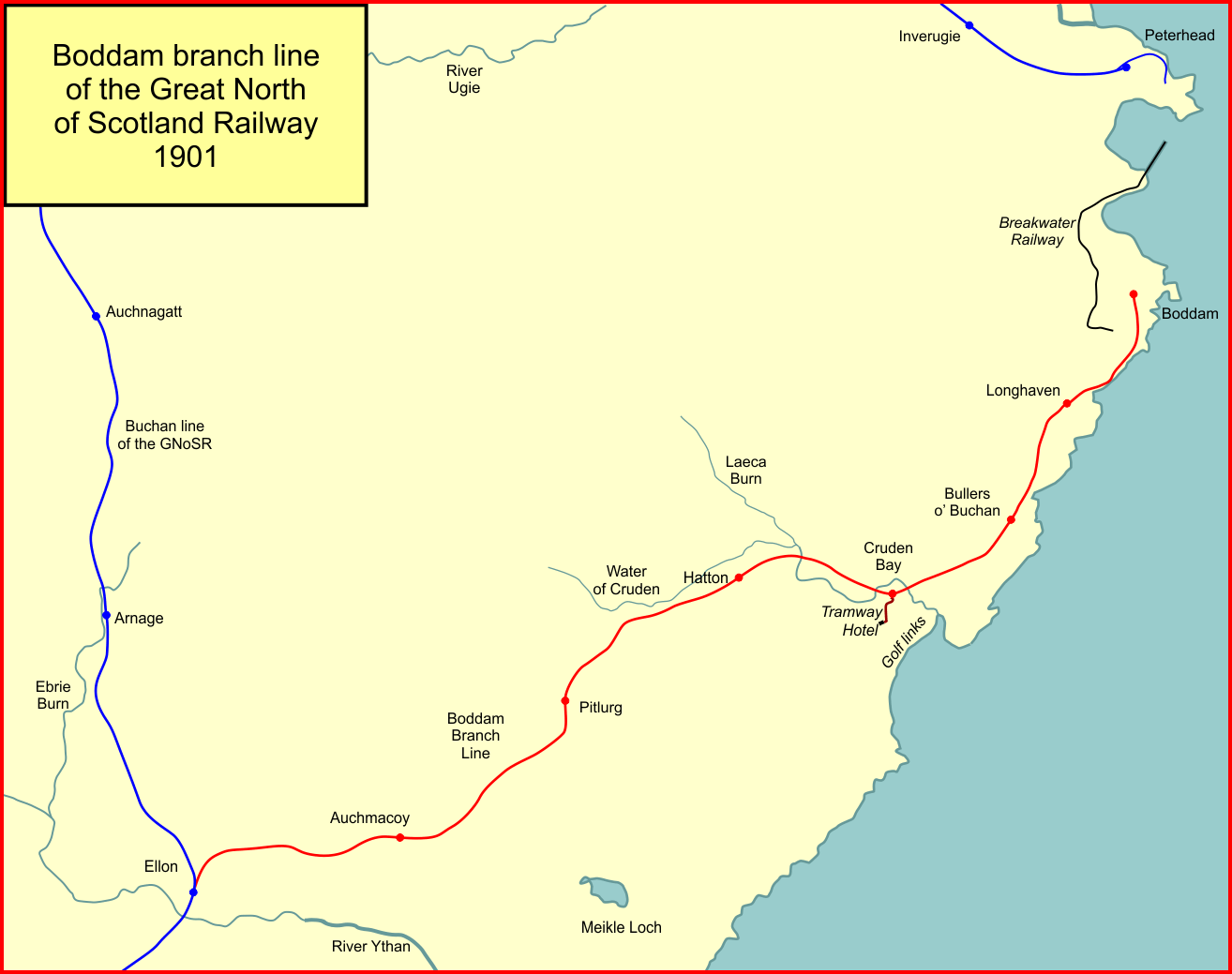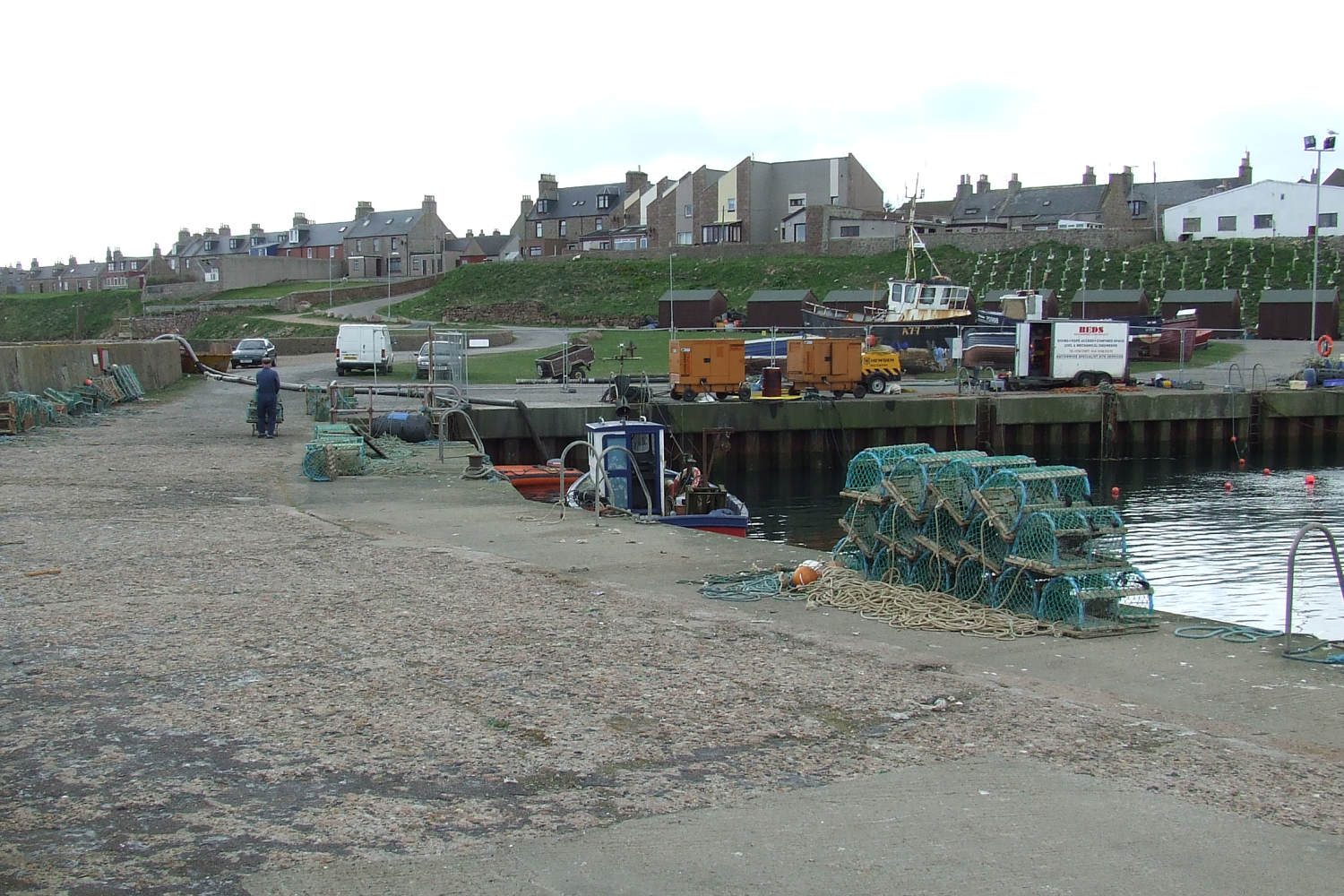|
Auchmacoy Railway Station
Auchmacoy railway station was a railway station in Crawhead, Aberdeenshire, near the Burn of Auchmacoy from which the station took its name. It was located on the Boddam branch line between Ellon and Boddam.British Railways Atlas.1947. p.38 History Opened by the Great North of Scotland Railway, then joining the London and North Eastern Railway during the Grouping Grouping may refer to: * Muenchian grouping * Principles of grouping * Railways Act 1921, also known as Grouping Act, a reorganisation of the British railway system * Grouping (firearms), the pattern of multiple shots from a sidearm See also ... of 1923. It was then closed by that company. References Notes Sources * * * Auchmacoy railway station on navigable OS map External links Disused railway stations in Aberdeenshire Railway stations in Great Britain opened in 1897 Railway stations in Great Britain closed in 1932 Former Great North of Scotland Railway stations 1897 establishments in Sco ... [...More Info...] [...Related Items...] OR: [Wikipedia] [Google] [Baidu] |
Aberdeenshire
Aberdeenshire ( sco, Aiberdeenshire; gd, Siorrachd Obar Dheathain) is one of the 32 Subdivisions of Scotland#council areas of Scotland, council areas of Scotland. It takes its name from the County of Aberdeen which has substantially different boundaries. The Aberdeenshire Council area includes all of the area of the Counties of Scotland, historic counties of Aberdeenshire and Kincardineshire (except the area making up the City of Aberdeen), as well as part of Banffshire. The county boundaries are officially used for a few purposes, namely land registration and Lieutenancy areas of Scotland, lieutenancy. Aberdeenshire Council is headquartered at Woodhill House, in Aberdeen, making it the only Scottish council whose headquarters are located outside its jurisdiction. Aberdeen itself forms a different council area (Aberdeen City). Aberdeenshire borders onto Angus, Scotland, Angus and Perth and Kinross to the south, Highland (council area), Highland and Moray to the west and Aber ... [...More Info...] [...Related Items...] OR: [Wikipedia] [Google] [Baidu] |
Great North Of Scotland Railway
The Great North of Scotland Railway (GNSR) was one of the two smallest of the five major Scottish railway companies prior to the 1923 Grouping, operating in the north-east of the country. Formed in 1845, it carried its first passengers the from Kittybrewster, in Aberdeen, to Huntly on 20 September 1854. By 1867 it owned of line and operated over a further . The early expansion was followed by a period of forced economy, but in the 1880s the railway was refurbished, express services began to run and by the end of that decade there was a suburban service in Aberdeen. The railway operated its main line between Aberdeen and and two routes west to , connections could be made at both Keith and Elgin for Highland Railway services to Inverness. There were other junctions with the Highland Railway at and , and at Aberdeen connections for journeys south over the Caledonian and North British Railways. Its eventual area encompassed the three Scottish counties of Aberdeenshire, Banffs ... [...More Info...] [...Related Items...] OR: [Wikipedia] [Google] [Baidu] |
Boddam Branch
The Boddam Branch Line was a 15-mile branch railway line constructed by the Great North of Scotland Railway (GNoSR) from Ellon railway station to Boddam in Aberdeenshire. It opened in 1897. As well as serving the small fishing port of Boddam and nearby stone quarries, it connected to the Cruden Bay Hotel, a luxurious resort hotel established and operated by the GNoSR. As a United Kingdom railway-owned resort hotel, the hotel was an unusual development. The remote location of the hotel and the short season, led to poor financial performance of the hotel; the other hoped-for traffics of the branch line were also disappointing. The passenger service on the branch line was discontinued in 1932 and the hotel itself was requisitioned by the military at the outset of World War II; it never re-opened to the public. The goods service on the branch closed at the end of 1948. Origins A branch line and a hotel The GNoSR had a main line from Aberdeen to Keith, and had encouraged local pri ... [...More Info...] [...Related Items...] OR: [Wikipedia] [Google] [Baidu] |
London And North Eastern Railway
The London and North Eastern Railway (LNER) was the second largest (after LMS) of the " Big Four" railway companies created by the Railways Act 1921 in Britain. It operated from 1 January 1923 until nationalisation on 1 January 1948. At that time, it was divided into the new British Railways' Eastern Region, North Eastern Region, and partially the Scottish Region. History The company was the second largest created by the Railways Act 1921. The principal constituents of the LNER were: * Great Eastern Railway * Great Central Railway * Great Northern Railway * Great North of Scotland Railway * Hull and Barnsley Railway * North British Railway * North Eastern Railway The total route mileage was . The North Eastern Railway had the largest route mileage of , whilst the Hull and Barnsley Railway was . It covered the area north and east of London. It included the East Coast Main Line from London to Edinburgh via York and Newcastle upon Tyne and the routes from Edinburgh to ... [...More Info...] [...Related Items...] OR: [Wikipedia] [Google] [Baidu] |
Boddam Branch Line
The Boddam Branch Line was a 15-mile branch railway line constructed by the Great North of Scotland Railway (GNoSR) from Ellon railway station to Boddam in Aberdeenshire. It opened in 1897. As well as serving the small fishing port of Boddam and nearby stone quarries, it connected to the Cruden Bay Hotel, a luxurious resort hotel established and operated by the GNoSR. As a United Kingdom railway-owned resort hotel, the hotel was an unusual development. The remote location of the hotel and the short season, led to poor financial performance of the hotel; the other hoped-for traffics of the branch line were also disappointing. The passenger service on the branch line was discontinued in 1932 and the hotel itself was requisitioned by the military at the outset of World War II; it never re-opened to the public. The goods service on the branch closed at the end of 1948. Origins A branch line and a hotel The GNoSR had a main line from Aberdeen to Keith, and had encouraged local pri ... [...More Info...] [...Related Items...] OR: [Wikipedia] [Google] [Baidu] |
Ellon, Aberdeenshire
Ellon ( gd, Eilean) is a town in Aberdeenshire, Scotland, approximately north of Aberdeen, lying on the River Ythan, which has one of the few undeveloped river Ythan Estuary, estuaries on the eastern coast of Scotland. It is in the ancient region of Formartine. Its name is believed to derive from the Gaelic term ''Eilean'', an island, on account of the presence of an island in the River Ythan, which offered a convenient fording point. In 1707 it was made a burgh of barony for the Earl of Buchan. Places of interest Places of interest within the town include Ellon Castle Gardens, recently brought back to life by volunteers and open to the public (see website for latest opening times). They include a walled garden of historical importance, yew trees dating back 500 years and the ruins of old Ellon Castle, and the surrounding walls known as the ''Deer Dyke''. Ellon also has ''Auld Brig'', a category A listed bridge across the Ythan, built in 1793 and still in use as a pedestria ... [...More Info...] [...Related Items...] OR: [Wikipedia] [Google] [Baidu] |
Boddam, Aberdeenshire
Boddam is a coastal village in Aberdeenshire, Scotland. It is north of Aberdeen and south of Peterhead. The settlement of Stirling Village lies immediately to the west. Sea cliffs rise to , south of the village: a coastal path leads along these to the Bullers of Buchan. History There is vicinity evidence of prehistoric man, particularly slightly to the southwest of Boddam where a number of prehistoric monuments including Catto Long Barrow, Silver Cairn and many tumuli are found. In that same vicinity of the Laeca Burn watershed is the point d'appui of historic battles between invading Danes and indigenous Picts. While human occupation in the vicinity of Boddam is attested to from Neolithic times with the quarrying of flint deposits at the Den of Boddam and in more recent times by the fortified remains near the islet of Dundonnie just south of the modern-day village, for much of the early historical period there is little or no record of habitation in the location of the fi ... [...More Info...] [...Related Items...] OR: [Wikipedia] [Google] [Baidu] |
Railways Act 1921
The Railways Act 1921 (c. 55), also known as the Grouping Act, was an Act of Parliament enacted by the British government and intended to stem the losses being made by many of the country's 120 railway companies, by "grouping" them into four large companies dubbed the " Big Four". This was intended to move the railways away from internal competition, and retain some of the benefits which the country had derived from a government-controlled railway during and after the Great War of 1914–1918. The provisions of the Act took effect from the start of 1923. History The British railway system had been built up by more than a hundred railway companies, large and small, and often, particularly locally, in competition with each other. The parallel railways of the East Midlands and the rivalry between the South Eastern Railway and the London, Brighton and South Coast Railway at Hastings were two examples of such local competition. During the First World War the railways were under st ... [...More Info...] [...Related Items...] OR: [Wikipedia] [Google] [Baidu] |
Pitlurg Railway Station
Pitlurg railway station was a railway station in Pitlurg, Aberdeenshire. History The station was opened on 2 August 1897 by the Great North of Scotland Railway The Great North of Scotland Railway (GNSR) was one of the two smallest of the five major Scottish railway companies prior to the 1923 Grouping, operating in the north-east of the country. Formed in 1845, it carried its first passengers the fr .... On the west side was the goods yard and on the southbound platform was the station building and the signal box. The station closed on 31 October 1932. References Disused railway stations in Aberdeenshire Former Great North of Scotland Railway stations Railway stations in Great Britain opened in 1897 Railway stations in Great Britain closed in 1932 1897 establishments in Scotland 1932 disestablishments in Scotland {{Aberdeenshire-railstation-stub ... [...More Info...] [...Related Items...] OR: [Wikipedia] [Google] [Baidu] |
Ellon Railway Station
Ellon railway station was a railway station in Ellon, Aberdeenshire, Scotland.British Railways Atlas.1947. p.38 History Ellon Railway Station (originally Ellon for Cruden) was situated on the Formartine and Buchan Railway, which ran from Peterhead/Fraserburgh to Dyce (where it connected to the Great North of Scotland Railway to Aberdeen). A few years after opening, Ellon Station became a junction station for the Boddam branch line line, which ran to Boddam via Cruden Bay. In its heyday the station had three platforms, two for the main line and one for the Boddam Branch. There was also a substantial goods yard. The branch line closed in 1932, and was used to store wagons until the track was lifted in 1950. The station is situated in Auchterellon, about 1 mile from the town centre. Ellon survived until 1965, when passenger services were withdrawn from the Formartine and Buchan Railway due to the Beeching Axe. The line was closed to freight in 1978, with the tracks being lifted s ... [...More Info...] [...Related Items...] OR: [Wikipedia] [Google] [Baidu] |






